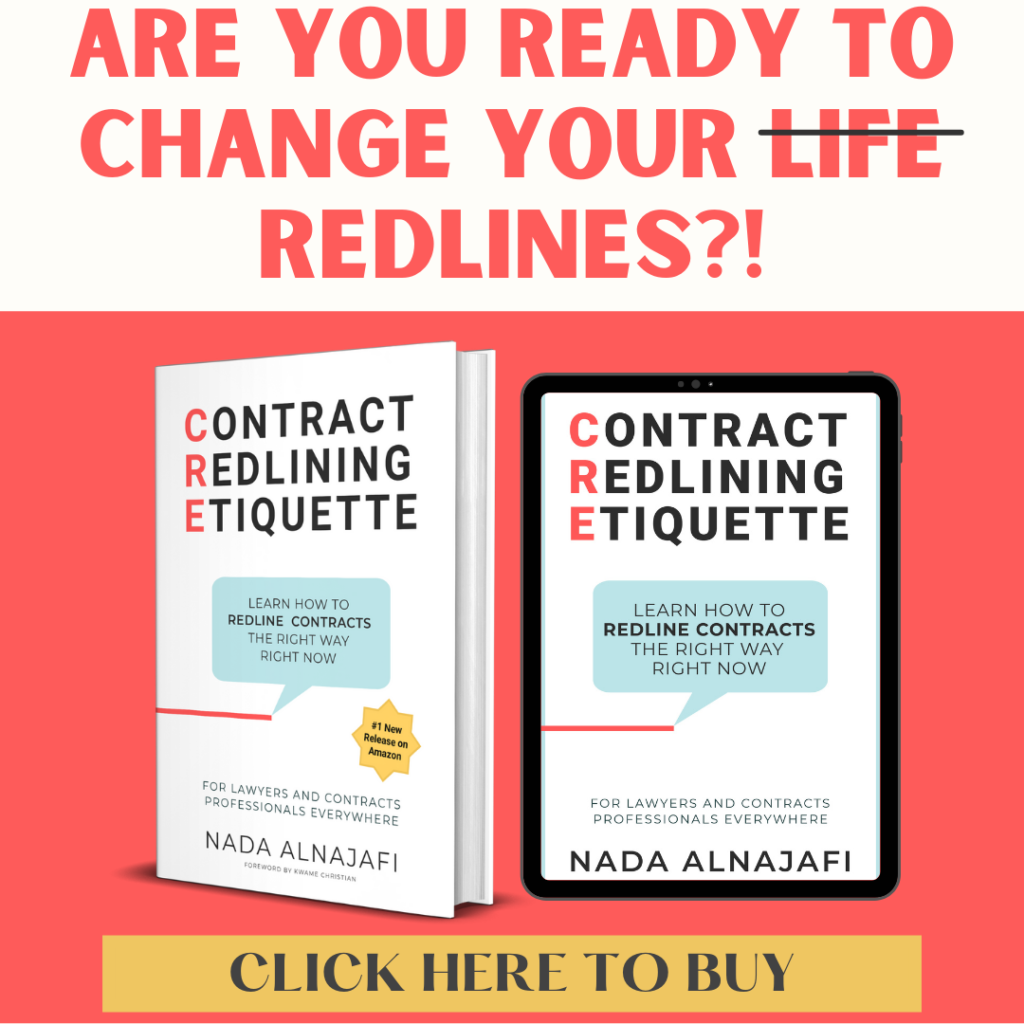 Broadly speaking, attorneys are either “transactional,” “deal-making” lawyers or they are litigators. Litigators tend to encounter contractual issues downstream, during litigation, whereas deal lawyers work upstream, grappling with issues before they occur, during the contract drafting stage. But lawyers of all stripes will benefit from reflecting on the roles of the contract drafter because each role emphasizes a somewhat different skillset. In exploring the many roles that the contract drafter plays, we discover that the contract drafter truly is the straw that stirs the business drink.
Broadly speaking, attorneys are either “transactional,” “deal-making” lawyers or they are litigators. Litigators tend to encounter contractual issues downstream, during litigation, whereas deal lawyers work upstream, grappling with issues before they occur, during the contract drafting stage. But lawyers of all stripes will benefit from reflecting on the roles of the contract drafter because each role emphasizes a somewhat different skillset. In exploring the many roles that the contract drafter plays, we discover that the contract drafter truly is the straw that stirs the business drink.
The Contract Drafter as Zealous Advocate
The practice of law involves “the application of legal principles and judgment with regard to the circumstances or objectives of another entity or person(s) which require the knowledge and skill of a person trained in the law.”[1] The practice of law includes the “selection, drafting, or completion of legal documents or agreements which affect the legal rights of an entity or person(s).”[2] Because contract drafting involves the practice of law, our analysis begins with the Rules of Professional Conduct (RPC). Thus, first and foremost, the role of the drafter is as zealous advocate.
RPC 2.1 discusses the lawyer’s role as advisor and advice-giver.[3] Contract lawyers are not mere scriveners. In fact, allowing oneself to serve as a mere passive conduit of information falls below the standard required under RPC 2.1 to “render candid advice” with respect to the representation. The ethical deal lawyer uses the contract as an opportunity to render substantive legal advice and fulfill ethical responsibilities, such as communicating and diligently advancing the client’s interests.
In rendering candid legal advice, the contract drafter must remember who decides. Model Rule 1.2(a) provides that “[A] lawyer shall abide by a client’s decisions concerning the objectives of the representation and, as required by Rule 1.4, shall consult with the client as to the means by which they are to be pursued.”[4]
RPC 1.4(b) requires the deal lawyer to “explain a matter to the extent reasonably necessary to permit the client to make informed decisions regarding the representation.” The conscientious transactional lawyer uses the contract as a communication modality while rendering advice about the deal and its ramifications through the contract drafting process. To “permit the client to make informed decisions” requires discussing issues raised by the proposed deal and contract edits, and using the contract as a primary forum for memorializing how these issues are addressed.
RPCs 1.3 (diligence) and 1.1 (competence) further conflict with a rubber stamp approach to contract drafting and review. Ethical contract drafting and review requires active feedback and due diligence to ensure both attorney and client (a) understand the business deal; (b) understand the goals of the representation; (c) understand relevant challenges and issues pertaining to the proposed agreement; and (d) understand how the client’s interests are protected by the agreement. The contract is not only a substantive document that creates private law among the parties but often the very means by which the attorney fulfills her ethical obligations.
The Contract Drafter as Lawmaker
Contracts allow parties to create their own “private law.”[5] In allowing the parties to create their own judicially enforceable rules, contracts are as legally significant as common law or statutory law. Thus, the role of contract drafter is on par with law maker.
The Contract Drafter as Clarifier
The contract drafter’s primary role is as deal clarifier. Contracts allow parties to clarify the deal by precisely defining terms, reducing ambiguity, proactively addressing issues, identifying- and allocating risk, and clarifying performance obligations and remedies.[6] An attorney can brilliantly navigate a negotiation, but if the provision isn’t clearly reduced to writing, the advantage is squandered.
Plain Language
Clarifying the deal starts with understanding what the parties mean and making sure the contract reflects this meaning. Clarifying the deal means drafting in plain, modern, English—not Legalese or Latin archaisms. Clarifying the deal means explaining the ramifications of the deal and its implications. For example, how the contract’s limitation of liability provision limits damages to “direct damages” and how this affects remedies.
Contract lawyers achieve clarity through format; specifically, by adhering to a logical and easy-to-follow formatting system. Tabulation, or breaking down sections into indented subsections, presents contractual information in a clearer, easier to understand and absorb manner.[7] For instance, instead of saying in a single paragraph that ABC Company party has authority to do Thing 1, 2, and 3, tabulate that provision so that each item is set off as its own paragraph, instead of jammed together. The tabulated version reads much more clearly and makes the passage easier to assimilate.
Contract Redlines
Adhering to shared standards of conduct with respect to contract editing, redlining and review, is another way of achieving clarity. Contract lawyer Nada Alnajafi’s Contract Redlining Etiquette™, or CRE, does just that by proscribing a set of contract redlining best practices which, if adhered to, bring clarity and efficiency to the contract negotiation process. For instance, by consistently providing explanatory notes to redline edits, clarity increases as the other side understands the rationale behind the requested changes.
Avoiding Ambiguities
Ambiguous provisions—those passages subject to more than one reasonable interpretation—are the hobgoblin of clear contract drafting. The “contra proferentem rule” is particularly unsettling for the deal lawyer. This means that courts would construe ambiguous clauses against the drafter. Good deal lawyers therefore root ambiguity out from every nook and cranny.
Sometimes the ambiguity is relatively straight-forward: is payment to be rendered in US or Canadian dollars? Other times, the ambiguity is less glaring but more costly. For instance, in his book, Contract Drafting and Negotiation for Entrepreneurs and Business Professionals, Paul Swegle recounts how an errant, ambiguously located comma cost one party millions of dollars.[8] At issue was when the parties could terminate the agreement. The contract stated that the agreement was to “continue in force for a period of five (5) years from the date it is made, and thereafter for successive five (5) year terms, unless and until terminated by one year prior notice in writing by either party.”[9] The ambiguity involved the meaning of this provision given its punctuation via an innocent looking comma. Did the provision mean that a party could not terminate the agreement until after the initial five-year term? Or did it mean that the period before “unless and until terminated” permitted termination anytime subject to one year notice? The deciding Commission adopted the later interpretation, allowing one party to exit the contract far sooner than the other anticipated, costing the non-exiting party millions.[10] This cautionary tale underscores the importance of clarity in contract drafting down to the punctuation and highlights the role of the contract drafter as clarifier of the deal.
Ambiguity’s evil sister—inconsistent language—must also be corralled if the contract is to remain clear. Contracts are not the place to dust off your thesaurus.[11] Eschew variety. Use the same word, the same way, to mean the same thing throughout the document. And where the term has a meaning particular to the contract, put it in the definitions section.
The Contract Drafter as Negotiator
As a trusted advisor and subject matter expert, the drafter typically finds herself negotiating substantive provisions of the agreement. As negotiator, it pays to deeply understand the client’s business so that your contributions are not merely technical or formulaic but address actual business needs. The contract negotiator should help her client understand its negotiating range and accompanying metrics, bargaining chips, walk-away point, and the all-important BATNA, or “best alternative to a negotiated settlement” (alternative to a contractual agreement). Drafting a provision is one thing. Understanding the alternatives is another. The effective dealmaker needs both.
The Contract Drafter as Futurist
While litigators litigate over past events, deal lawyers live in an ex-ante, future-oriented world, pondering how contractual language ultimately affects substantive rights. The effective contract lawyer scrutinizes events and scenarios to ensure that language now prevents issues–and litigation–later. To understand what the future might hold, deal lawyers must understand how the deal might come off the rails. A good question to ask your client is, What are your greatest fears with this agreement? Once you understand what failure looks like, you can take steps to avoid these unfortunate outcomes, such as by refining performance requirements or remedies.
The Contract Drafter as Risk Manager
During the contract drafting and negotiation phase, parties allocate risk by deciding whether to deal with risk now or later. For example, vague standards of performance like “best efforts” are risky but the parties may wish to defer handling the risk to the back end (litigation phase) as opposed to resolving the issue on the front end, such as by more precisely delineating performance obligations.[12]
Transactional lawyers help their clients evaluate other risk management strategies. The first of which is simply to walk away from the risk by not agreeing to the deal. Eliminating risk is not always the best bet, however, because getting rid of the risk sometimes loses the deal.
Rather than walk away from risk completely, a more nuanced approach involves employing various risk mitigation strategies, such as obtaining insurance. Deal lawyers also graft mitigation measures into their contracts, such as limitation of liability clauses.
Another way to handle risk is to transfer it, either to a third party (insurance carrier) or to the other side. Indemnification provisions are a familiar means of transferring risk but success often depends on factors outside the lawyer’s control, such as the parties’ relative bargaining power, alternatives, and the value proposition.
Contract lawyers must lean-in to their role as risk managers by exploring all four of the risk management options— 1) walk away, 2) accept, 3) mitigate, 4) transfer.
The Contract Drafter as Fiduciary
Contract drafters fill a fiduciary role because an attorney is a fiduciary for her client.[13] This is particularly true considering how contracts are a vehicle for managing the client’s resources and affairs. Mismanagement of the contract is tantamount to mismanagement of the client’s resources and affairs.
To be a good steward, the transactional lawyer must have a reliable process for ensuring nothing gets missed. This is where checklists come in. Checklists help ensure that necessary background tasks and vetting get done and that required attachments and appendices are in order. Checklists ensure that remedies are adequate, that the contract has been properly formed, that risk has been properly allocated, and that the client’s goals have been met. Don’t rely on memory. Use a checklist.
The Contract Drafter: A Multifaceted Role
As we’ve seen, the contract drafter plays many roles: advisor, risk manager, advocate, fiduciary, lawmaker, and futurist. Performing these various roles effectively requires conscientiously handling details at the runway level while helping your client achieve a 30,000-foot perspective of goals, future contingencies, and trade-offs. In filling these overlapping roles, the transactional lawyer truly is the straw that stirs the business drink.
* * *
[1] General Rule 24 (Definition of the Practice of Law).
[2] General Rule 24.
[3] R. Prof. Conduct 2.1
[4] Model R. Prof. Conduct 1.2(a).
[5] Paul A. Swegle, Contract Drafting and Negotiation at 5 (2018).
[6] Tina Stark, Drafting Contracts How and Why Lawyers Do What They Do at 4 (2d ed. 2014).
[7] Tina L. Stark, Drafting Contracts: How and Why Lawyers Do What They Do at 19 (2d ed. 2014).
[8] Paul A. Swegle, Contract Drafting and Negotiation at 2 (2018).
[9] Swegle at 2.
[10] Swegle at 2.
[11] Kenneth A. Adams, A Manual of Style for Contract Drafting at 1 (2004).
[12] Robert E. Scott and George G. Triantis, Anticipating Litigation in Contract Design, Yale L. Rev., 814 (2006).
[13] See United States v. Chestman, 947 F.2d 551, 568 (2d Cir. 1991) (dictum).

















